Saks Fifth Avenue 2008 Annual Report Download - page 12
Download and view the complete annual report
Please find page 12 of the 2008 Saks Fifth Avenue annual report below. You can navigate through the pages in the report by either clicking on the pages listed below, or by using the keyword search tool below to find specific information within the annual report.-
 1
1 -
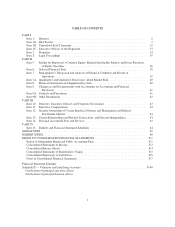 2
2 -
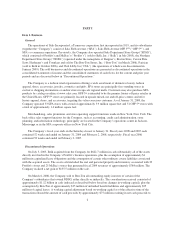 3
3 -
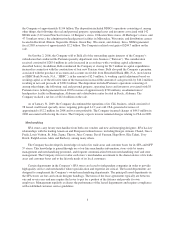 4
4 -
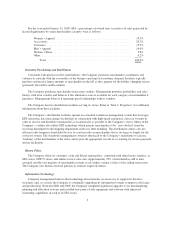 5
5 -
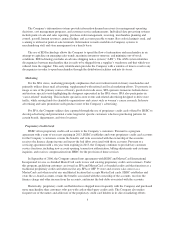 6
6 -
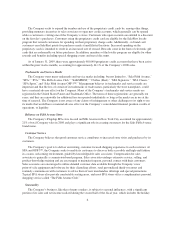 7
7 -
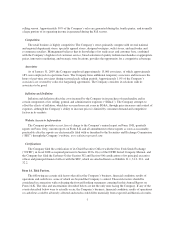 8
8 -
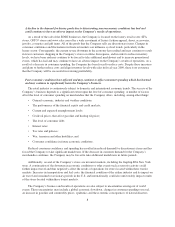 9
9 -
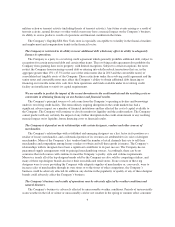 10
10 -
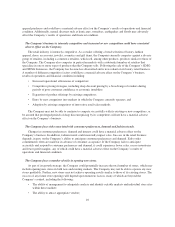 11
11 -
 12
12 -
 13
13 -
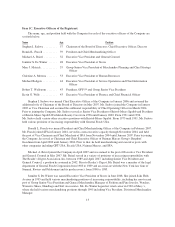 14
14 -
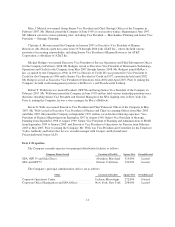 15
15 -
 16
16 -
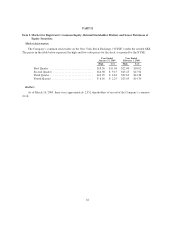 17
17 -
 18
18 -
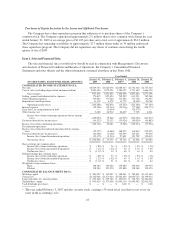 19
19 -
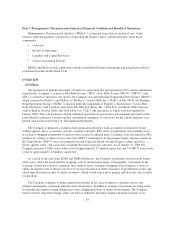 20
20 -
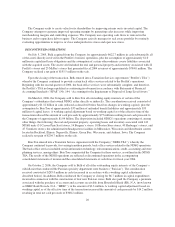 21
21 -
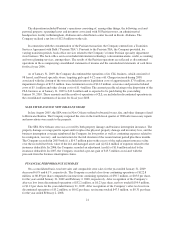 22
22 -
 23
23 -
 24
24 -
 25
25 -
 26
26 -
 27
27 -
 28
28 -
 29
29 -
 30
30 -
 31
31 -
 32
32 -
 33
33 -
 34
34 -
 35
35 -
 36
36 -
 37
37 -
 38
38 -
 39
39 -
 40
40 -
 41
41 -
 42
42 -
 43
43 -
 44
44 -
 45
45 -
 46
46 -
 47
47 -
 48
48 -
 49
49 -
 50
50 -
 51
51 -
 52
52 -
 53
53 -
 54
54 -
 55
55 -
 56
56 -
 57
57 -
 58
58 -
 59
59 -
 60
60 -
 61
61 -
 62
62 -
 63
63 -
 64
64 -
 65
65 -
 66
66 -
 67
67 -
 68
68 -
 69
69 -
 70
70 -
 71
71 -
 72
72 -
 73
73 -
 74
74 -
 75
75 -
 76
76 -
 77
77 -
 78
78 -
 79
79 -
 80
80 -
 81
81 -
 82
82 -
 83
83 -
 84
84 -
 85
85 -
 86
86 -
 87
87 -
 88
88 -
 89
89 -
 90
90 -
 91
91 -
 92
92 -
 93
93 -
 94
94 -
 95
95 -
 96
96 -
 97
97 -
 98
98 -
 99
99 -
 100
100 -
 101
101 -
 102
102 -
 103
103 -
 104
104 -
 105
105 -
 106
106 -
 107
107 -
 108
108 -
 109
109 -
 110
110 -
 111
111 -
 112
112 -
 113
113 -
 114
114 -
 115
115 -
 116
116 -
 117
117 -
 118
118 -
 119
119 -
 120
120 -
 121
121 -
 122
122 -
 123
123 -
 124
124 -
 125
125 -
 126
126 -
 127
127 -
 128
128 -
 129
129 -
 130
130 -
 131
131 -
 132
132 -
 133
133 -
 134
134 -
 135
135 -
 136
136 -
 137
137 -
 138
138 -
 139
139 -
 140
140 -
 141
141 -
 142
142 -
 143
143 -
 144
144 -
 145
145 -
 146
146 -
 147
147 -
 148
148 -
 149
149 -
 150
150 -
 151
151 -
 152
152 -
 153
153 -
 154
154 -
 155
155 -
 156
156 -
 157
157 -
 158
158 -
 159
159 -
 160
160 -
 161
161 -
 162
162 -
 163
163 -
 164
164 -
 165
165 -
 166
166 -
 167
167 -
 168
168 -
 169
169 -
 170
170 -
 171
171 -
 172
172 -
 173
173 -
 174
174 -
 175
175 -
 176
176 -
 177
177 -
 178
178 -
 179
179 -
 180
180 -
 181
181 -
 182
182 -
 183
183 -
 184
184 -
 185
185 -
 186
186 -
 187
187 -
 188
188 -
 189
189 -
 190
190 -
 191
191 -
 192
192 -
 193
193 -
 194
194 -
 195
195 -
 196
196 -
 197
197 -
 198
198 -
 199
199 -
 200
200 -
 201
201 -
 202
202 -
 203
203 -
 204
204 -
 205
205 -
 206
206 -
 207
207 -
 208
208 -
 209
209 -
 210
210 -
 211
211 -
 212
212 -
 213
213 -
 214
214 -
 215
215 -
 216
216 -
 217
217 -
 218
218 -
 219
219 -
 220
220 -
 221
221 -
 222
222 -
 223
223 -
 224
224 -
 225
225 -
 226
226 -
 227
227 -
 228
228 -
 229
229 -
 230
230 -
 231
231 -
 232
232 -
 233
233 -
 234
234 -
 235
235 -
 236
236 -
 237
237 -
 238
238 -
 239
239 -
 240
240 -
 241
241 -
 242
242 -
 243
243 -
 244
244 -
 245
245 -
 246
246 -
 247
247 -
 248
248 -
 249
249 -
 250
250 -
 251
251 -
 252
252 -
 253
253 -
 254
254 -
 255
255 -
 256
256 -
 257
257 -
 258
258 -
 259
259 -
 260
260 -
 261
261 -
 262
262 -
 263
263 -
 264
264 -
 265
265 -
 266
266 -
 267
267 -
 268
268 -
 269
269 -
 270
270 -
 271
271 -
 272
272 -
 273
273 -
 274
274 -
 275
275 -
 276
276 -
 277
277 -
 278
278 -
 279
279 -
 280
280 -
 281
281 -
 282
282 -
 283
283 -
 284
284 -
 285
285 -
 286
286 -
 287
287 -
 288
288 -
 289
289 -
 290
290 -
 291
291 -
 292
292
 |
 |
• The competition for suitable store sites;
• The ability to negotiate favorable lease terms with landlords;
• The availability of employees to staff new stores and the Company’s ability to hire, train, motivate and
retain store personnel; and
• The ability to attract customers and generate sales sufficient to operate new stores profitably.
In future years, the Company may enter into additional markets. These markets may have different
competitive conditions, consumer trends and discretionary spending patterns than its existing markets, which
may cause new stores in these markets to be less successful than stores in existing markets.
The loss of, or disruption in, the Company’s centralized distribution centers would have a material adverse
effect on the Company’s business and operations.
The Company depends on the orderly operation of the receiving and distribution process, which depends, in
turn, on adherence to shipping schedules and effective management of distribution centers. Although the
Company believes that its receiving and distribution process is efficient, and the Company has appropriate
contingency plans, unforeseen disruptions in operations due to fire, hurricanes or other catastrophic events, labor
disagreements or shipping problems, may result in delays in the delivery of merchandise to the Company’s
stores.
Additionally, freight cost is impacted by changes in fuel prices. Fuel prices affect freight cost both on
inbound freight from vendors to the distribution centers and outbound freight from the distribution centers to the
Company’s stores.
Although the Company maintains business interruption and property insurance, management cannot be
assured that the Company’s insurance coverage will be sufficient, or that insurance proceeds will be timely paid
to the Company, if any of the distribution centers are shut down for any reason.
Loss of the Company’s trademarks and service marks or damage to the Company’s brand could have a
material adverse effect on the Company’s results of operations.
The Company owns many trademarks and service marks including, but not limited to, “Saks Fifth Avenue,”
“SFA,” “S5A,” “The Fifth Avenue Club,” “SAKSFIRST,” “Clothes (Real)”, “SFA Signature,” “SFA Classic,”
“SFA Sport” and “OFF 5th.” Management believes its trademarks and service marks are important and that the
loss of certain of its trademarks or trade names, particularly the store nameplates, could have a material adverse
effect on the Company. Many of the Company’s trademarks and service marks are registered in the United States
Patent and Trademark Office. In addition, the Company has a well-recognized brand that it believes represents
unsurpassed customer service and quality merchandise. Any significant damage to the Company’s brand or
reputation may negatively impact same-store sales, lower employee morale and productivity, and diminish
customer trust, resulting in a reduction in shareholder value.
Fluctuations in foreign currency could have an adverse impact on the Company’s business.
The Company purchases a substantial portion of its inventory from foreign suppliers who price their
merchandise in currencies other than the U.S. dollar. Although fluctuations in the Euro-U.S. dollar exchange rate
have the largest impact on the Company’s business, it procures goods from many countries and, consequently, is
affected by fluctuations in the U.S. dollar relative to the currencies of the countries from which the Company
11
